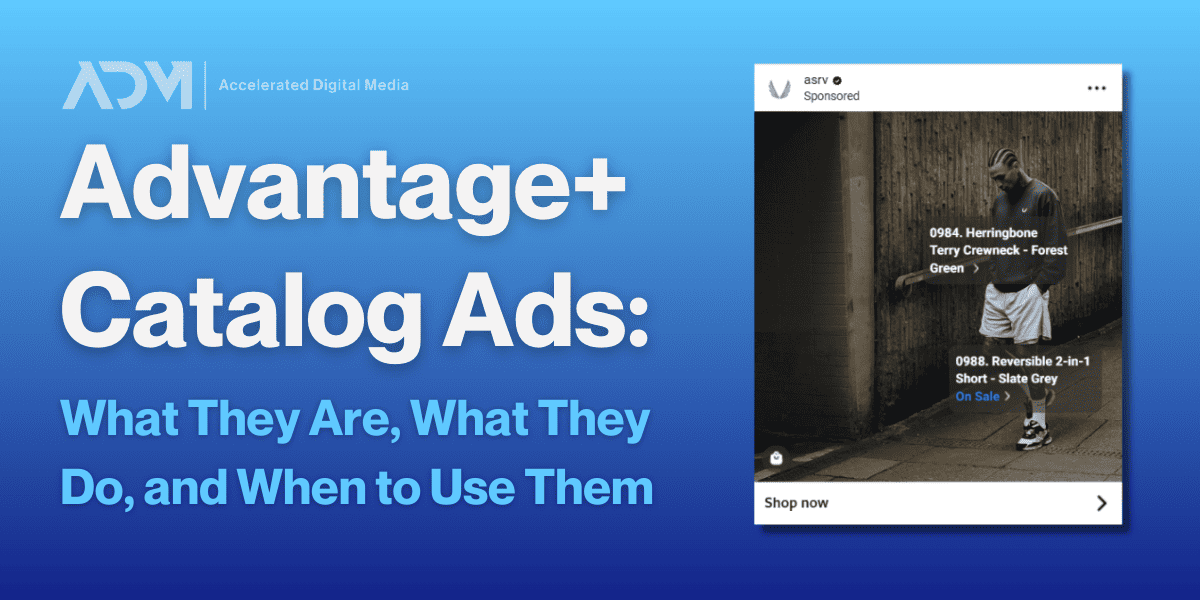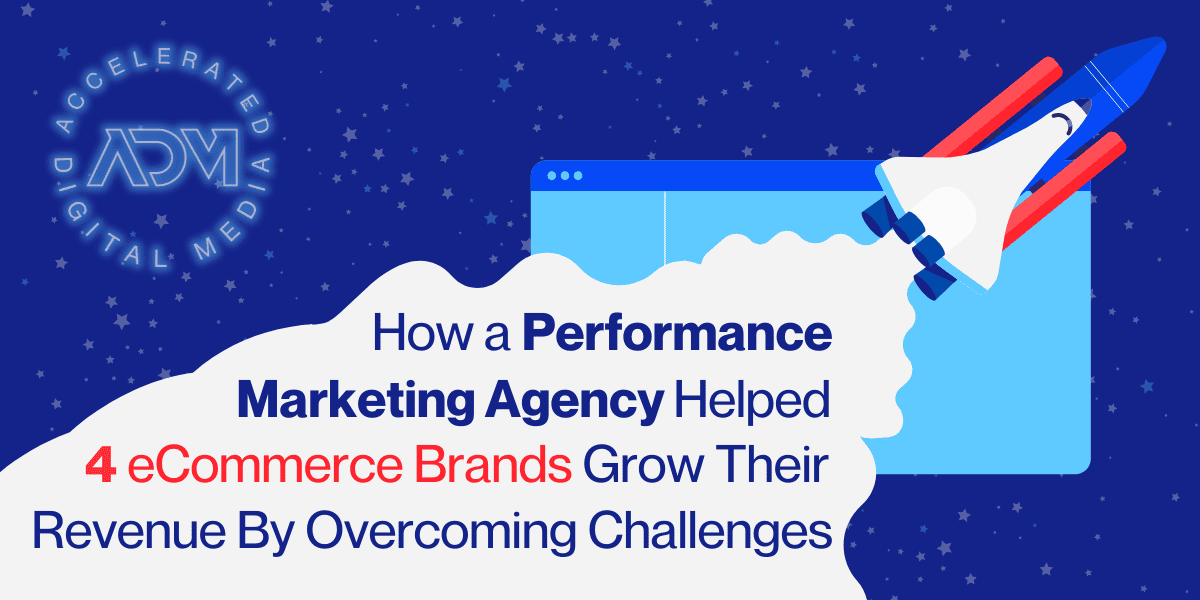Feed-based product advertising is one of the most powerful tools that eCommerce brands have at their disposal, and Meta’s offerings in that category are always evolving. What used to be called Dynamic Product Ads are now referred to as Advantage+ Catalog Ads, but the basic concepts remain the same. These ad types allow you to put dynamically-assembled product collections in front of your target audience in a number of formats, allowing for personalization and seamless cross-device targeting to ensure your collections are seen by the right people.
In this blog, we’ll lay out the terminology around Meta’s catalog ads, the different formats that you can deploy them in, the benefits they offer, and whether they always need to be deployed under Meta’s Advantage+ umbrella.
Dynamic Product Ads, Advantage+ Catalog Ads…What’s the Difference?
The difference between “Dynamic Product Ads” and “Catalog Ads” is that…well, there isn’t really one. Meta has done some reshuffling of the terminology around their product ads in recent months, so it’s worth taking time to lay out all the terminology and what it refers to.
Dynamic Product Ads (DPAs) were Meta’s prior name for feed-based ads that displayed different products in your inventory based on potential user interest.
Advantage+ is Meta’s umbrella name for its powerful machine learning campaign styles (not unlike Google’s Performance Max), which rely on algorithms to find potential customers, assemble different ad varieties, and target outcomes based on your business goals.
Advantage+ Shopping Campaigns are one of a few available Advantage+ campaign types, and the one that eCommerce brands will be using to run their product ads—because its algorithm is geared towards selling products. Other Advantage+ campaign types include App campaigns (for encouraging downloads) and Audience campaigns (for things like spreading awareness around policy issues, etc.)
Advantage+ Catalog Ads are now the primary method for deploying product ads across Meta—and the term has primarily “Dynamic Product Ads” and “DPAs” in Meta nomenclature. The power of Advantage+ Catalog Ads is automation—they update based on user behavior, meaning you can run personalized ads at scale without manually building out hundreds of different ads.
What Are the Different Types of Catalog Ads on Meta?
There are a few different Meta product ad formats that eCommerce brands can use to drive results. Each serves its own purpose, and understanding how to leverage them is key to running successful campaigns.
- Single Image Ads: This is the simplest format, where one product image is used to push a specific item. It’s best for direct promotions when you want to focus on one particular product or offer. This format is easy to set up and can be effective for highlighting a key product.
- Carousel Ads: Carousel ads allow you to showcase multiple products in a single swipeable format. Each card in the carousel can feature a different product, making it great for promoting collections or showing off complementary items. It’s an interactive format, and people can engage with individual products, increasing the chance they’ll find something that grabs their attention.
- Collection Ads: This format is tailored for mobile and is designed to create an immersive shopping experience. When users click on a collection ad, they’re taken to a full-screen “Instant Experience” where they can browse through several products at once. This format is all about visual impact and creating a seamless browsing experience that encourages more engagement.
Even though the name has shifted to catalog ads, the dynamic, personalized targeting is still a huge advantage for eCommerce brands. You’re able to retarget users with products they’ve shown interest in and even suggest related items based on their activity. It’s a smart way to keep your products in front of the right people and push them further down the buying path.
The Advantages of Meta’s Advantage+ Catalog Ads
Advantage+ Catalog Ads are valuable in eCommerce for their versatility, effectiveness, and efficiency. Those advantages are the result of a few key attributes in their functionality.
They Enable Personalization at Scale. One of the biggest advantages of these ads is their ability to automatically show highly-relevant products to users based on their behavior. Whether someone viewed a product, added it to their cart, or made a purchase, Catalog Ads ensure the next ad they see is directly tied to their interaction with your brand. This level of personalization can dramatically improve engagement, as users are more likely to click on an ad that features something they’ve already shown interest in.
Catalog Ads Enable Retargeting—Without Ad Fatigue. Another key benefit of ads that “learn” from user interaction and engagement is they then give you the ability to retarget potential customers without bombarding them with the same message and visuals every time. Fresh content and products reduce ad fatigue, so Catalog Ads rotate through different products or variations. This flexibility can also introduce users to other items in your catalog that they may not have previously considered, but are a good fit based on their browsing patterns.
They Are Responsive to Your Product Catalog and Inventory. Catalog Ads pull directly from your product feed, meaning your ads are always up-to-date with your inventory. When a product goes out of stock, has a price change, or needs to be updated with new images, it’s reflected automatically in your ads, reducing the need for manual updates—or disappointing instances when a user is shown a product they want, only to find it is out of stock.
This advantage also applies to retargeting: when a new product is introduced in your feed, it automatically slides into the rotation for audiences it may be relevant to (e.g. a new pair of shoes will be shown to users who are already being served ads for your shoe collection).
As a result of this dynamic, automated functionality, Catalog Ads tend to convert at a much higher rate than generic product ads on Meta platforms, which leads to a stronger return on ad spend (ROAS) and higher profitability.
Can You Run Catalog Ads on Meta Without Advantage+?
There are short and long answers to the above question. The very short answer is: yes. The longer answer is: yes, if you have a good reason to.
You can choose to tag a specific catalog item to an ad in a non-Advantage+ campaign or deploy features like Instant Experience, meaning you’re using the ad functionality without the Advantage+ algorithm behind it.
Meta wants brands to utilize its Advantage+ technology: It’s the company’s most impressive automation, it puts a lot of the targeting and ad display control in the hands of the algorithm rather than the advertiser, and in most cases, it outperforms more traditional campaign formats.
When You Should (and Shouldn’t) Use Advantage+ Catalog Ads
For advertisers, Advantage+ Shopping Campaigns and Catalog Ads are a natural fit for each other. This combination excels in scenarios where automation and broad optimization are key drivers of success, like:
- You’re Trying to Drive Conversions at Scale: Advantage+ is designed to maximize results by using Meta’s machine learning to find high-value users. For brands focused on conversion-based goals like purchases, Advantage+ optimizes for lower-funnel events using data from DPAs
- You’re Targeting Broad Audiences: If your goal is to reach a wide pool of potential customers, Advantage+ leverages AI to dynamically serve ads to the most relevant users. This is especially effective for brands with large catalogs who are looking to cast a wide net.
- You Have Limited Internal Resources: Advantage+ minimizes the need for constant campaign monitoring and manual adjustments, making it ideal for teams with fewer resources or time to manage highly segmented campaigns.
However, while Advantage+ can be incredibly effective, it does take a lot of optimization and targeting control out of the advertiser’s hands (though Meta has recently given some of that back). That means there might be certain scenarios where running these types of ads outside of Advantage+ could be the better option.
- You’re Targeting a Very-Specific Audience Segment: If you need granular control over who sees your ads–such as targeting very niche demographics, geographic areas, or specific retargeting audiences–standard campaigns provide more customization than Advantage+.
- You’re Testing New Strategies: For brands experimenting with creative, targeting, or product sets, running product ads outside of Advantage+ allows for greater flexibility to test and refine before automating.
- You Have an Extremely Limited Budget: Advantage+ campaigns optimize based on data volume and may require higher budgets to fully leverage Meta’s algorithm. Smaller-budget campaigns can sometimes perform better with manual DPA setups, where spend is tightly controlled.
- You’re Running a Limited Promotional Campaign: If you’re running a time-sensitive promotion or a highly-targeted sale (e.g., a flash sale for a specific product category), manually setting up product campaigns can give you more control over timing, audience targeting, and messaging.
Under very specific circumstances, ADM has tested catalog ads with and without Advantage+ and produced results that even surprised our own team. But while the standard campaign types outperformed Meta’s algorithmic campaigns in that scenario, Advantage+ will still be the way to go for most brands in most use cases.
As always, it comes down to working with an expert eCommerce marketing agency that knows how to run proper tests to determine what will be the best course of action for your brand. If you’re looking to partner with one of those, don’t hesitate to kick off the conversation with our team below:




